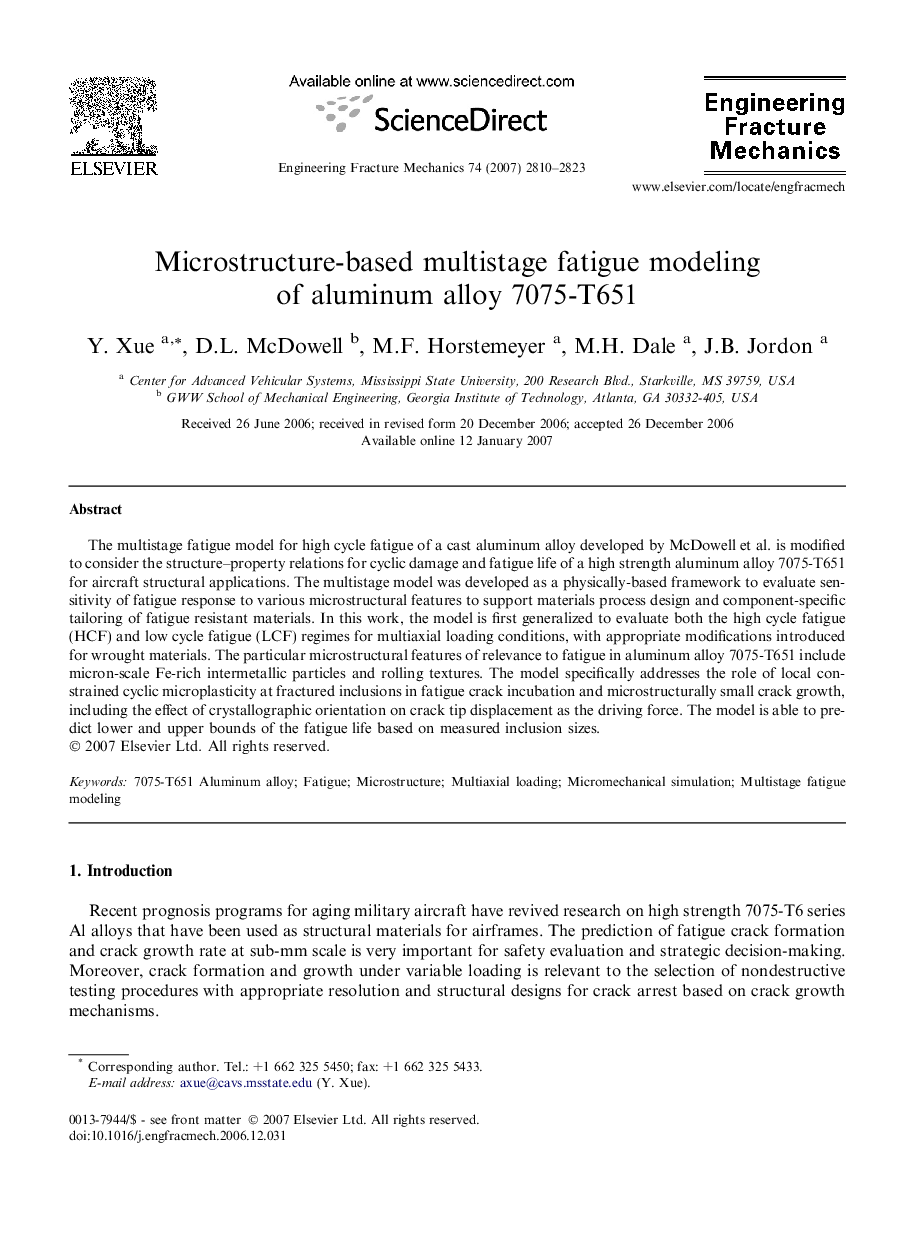| Article ID | Journal | Published Year | Pages | File Type |
|---|---|---|---|---|
| 771422 | Engineering Fracture Mechanics | 2007 | 14 Pages |
The multistage fatigue model for high cycle fatigue of a cast aluminum alloy developed by McDowell et al. is modified to consider the structure–property relations for cyclic damage and fatigue life of a high strength aluminum alloy 7075-T651 for aircraft structural applications. The multistage model was developed as a physically-based framework to evaluate sensitivity of fatigue response to various microstructural features to support materials process design and component-specific tailoring of fatigue resistant materials. In this work, the model is first generalized to evaluate both the high cycle fatigue (HCF) and low cycle fatigue (LCF) regimes for multiaxial loading conditions, with appropriate modifications introduced for wrought materials. The particular microstructural features of relevance to fatigue in aluminum alloy 7075-T651 include micron-scale Fe-rich intermetallic particles and rolling textures. The model specifically addresses the role of local constrained cyclic microplasticity at fractured inclusions in fatigue crack incubation and microstructurally small crack growth, including the effect of crystallographic orientation on crack tip displacement as the driving force. The model is able to predict lower and upper bounds of the fatigue life based on measured inclusion sizes.
